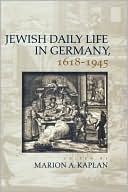Category Books
- Fiction Books & Literature
- Graphic Novels
- Horror
- Mystery & Crime
- Poetry
- Romance Books
- Science Fiction & Fantasy
- Thrillers
- Westerns
- Ages 0-2
- Ages 3-5
- Ages 6-8
- Ages 9-12
- Teens
- Children's Books
- African Americans
- Antiques & Collectibles
- Art, Architecture & Photography
- Bibles & Bible Studies
- Biography
- Business Books
- Christianity
- Computer Books & Technology Books
- Cookbooks, Food & Wine
- Crafts & Hobbies Books
- Education & Teaching
- Engineering
- Entertainment
- Foreign Languages
- Game Books
- Gay & Lesbian
- Health Books, Diet & Fitness Books
- History
- Home & Garden
- Humor Books
- Judaism & Judaica
- Law
- Medical Books
- New Age & Spirituality
- Nonfiction
- Parenting & Family
- Pets
- Philosophy
- Political Books & Current Events Books
- Psychology & Psychotherapy
- Reference
- Religion Books
- Science & Nature
- Self Improvement
- Sex & Relationships
- Social Sciences
- Sports & Adventure
- Study Guides & Test Prep
- Travel
- True Crime
- Weddings
- Women's Studies
Jewish Daily Life in Germany, 1618-1945 » (1st Edition)

Authors: Marion A. Kaplan
ISBN-13: 9780195171648, ISBN-10: 0195171640
Format: Hardcover
Publisher: Oxford University Press, USA
Date Published: December 2004
Edition: 1st Edition
Author Biography: Marion A. Kaplan
Marion A. Kaplan is Skirball Professor of Modern Jewish History at New York University. Robert Liberles is Professor of Modern Jewish History at Ben Gurion University in Beersheva, Israel. Steven Lowenstein is the Isadore Levine Professor of Jewish History at the University of Judaism. Trude Maurer is Professor of East European and Modern History, University of Goettingen.
Book Synopsis
From the seventeenth century until the Holocaust, Germany's Jews lurched between progress and setback, between fortune and terrible misfortune. German society shunned Jews in the eighteenth century and opened unevenly to them in the nineteenth and early twentieth centuries, only to turn murderous in the Nazi era. By examining the everyday lives of ordinary Jews, this book portrays the drama of German-Jewish history — the gradual ascent of Jews from impoverished outcasts to comfortable bourgeois citizens and then their dramatic descent into genocidal torment during the Nazi years. Building on social, economic, religious, and political history, it focuses on the qualitative aspects of ordinary life — emotions, subjective impressions, and quotidian perceptions. How did ordinary Jews and their families make sense of their world? How did they construe changes brought about by industrialization? How did they make decisions to enter new professions or stick with the old, juggle traditional mores with contemporary ways? The Jewish adoption of secular, modern European culture and the struggle for legal equality exacted profound costs, both material and psychological. Even in the heady years of progress, a basic insecurity informed German-Jewish life. Jewish successes existed alongside an antisemitism that persisted as a frightful leitmotif throughout German-Jewish history. And yet the history that emerges from these pages belies simplistic interpretations that German antisemitism followed a straight path from Luther to Hitler. Neither Germans nor Jews can be typecast in their roles vis à vis one another. Non-Jews were not uniformly antisemitic but exhibited a wide range of attitudes towards Jews. Jewish daily life thus provides another vantage point from which to study the social life of Germany. Focusing on both internal Jewish life — family, religion, culture and Jewish community — and the external world of German culture and society provides a uniquely well-rounded portrait of a world defined by the shifting sands of inclusion and exclusion.
Table of Contents
| Introduction | ||
| Pt. I | On the threshold of modernity : 1618-1780 | |
| Pt. II | The beginning of integration, 1780-1870 | |
| Pt. III | As Germans and as Jews in imperial Germany | |
| Pt. IV | From everyday life to a state of emergency : Jews in Weimar and Nazi Germany | |
| Conclusion |
Subjects
 Judaism & Judaica
Judaism & Judaica  History - Judaism
History - JudaismHistory
 European History
European History  German History
German HistoryHistory
 Religious History
Religious History  Judaism & Judaica
Judaism & JudaicaHistory
 World History
World History  Jewish History
Jewish HistoryJudaism & Judaica
 History - Judaism
History - Judaism  Europe - History of Judaism
Europe - History of JudaismNonfiction
 Social Sciences
Social Sciences  Jewish Studies
Jewish StudiesReligion Books
 Judaism & Judaica
Judaism & Judaica  History - Judaism
History - JudaismScience & Nature
 Social Sciences
Social Sciences  Jewish Studies
Jewish StudiesSocial Sciences
 Jewish Studies
Jewish Studies  Jewish History
Jewish HistoryChristianity
 Christianity
Christianity  All Religion
All ReligionNonfiction
 History
History  European History
European HistoryNonfiction
 History
History  Religious History
Religious HistoryNonfiction
 History
History  World History
World HistoryNonfiction
 Religion
Religion  All Religion
All ReligionReligion Books
 Christianity
Christianity  All Religion
All Religion
